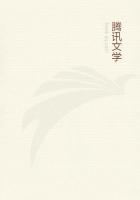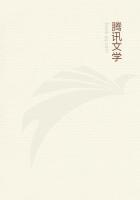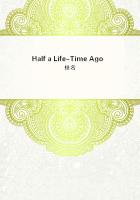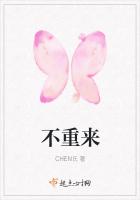THE PERGAMUS LIBRARY COMPOSED PRINCIPALLY OF PARCHMENT VOLUMES--CAUSES WHICH CONTRIBUTED TO THE SUBSTITUTION OF PARCHMENT FOR PAPYRUS --ANECDOTE ABOUT EUMENES AND PTOLEMY PHILADELPHUS--INVENTION OF METHOD WHICH MADE SKINS AVAILABLE FOR FLUID INK WRITING--INTRODUCTIONOF DRESSED SKINS THE FIRST STEP TOWARDS THE MODERN FORM OF BOOKS--WHEN PARCHMENT AND VELLUM SUPERSEDED OTHER SUBSTANCES AS A GENERALMATERIAL FOR WRITING UPON--MANUFACTURE OF BARK PAPER PREVIOUS TO THE INTRODUCTION OFTHE LINEN PAPER OF THE EAST--SOME OBSERVATIONSABOUT CHINESE PAPER--ALLUSIONS OF CLASSICAL WRITERS TO INSCRIPTIONS ON SKINS AND DISCOVERYOF SPECIMENS--EMPLOYMENT OF PARCHMENT BY THE HEBREWS--OLD SCRIPTURAL MSS. DISCOVERED ON PARCHMENT--NAMES OF THE MOST VALUABLE NEW TESTAMENT CODICES--STORY OF THE DISCOVERY OF THE SINAITIC CODEX AS TOLD BY MADAN--ASSERTIONOF SIMONIDES THAT HE FORGED IT--PAMLIMPSESTS THE LINK BETWEEN CLASSICAL TIMES AND THE MIDDLEAGES--OBSERVATIONS ABOUT THEM AND SOME DISCOVERIESOF THE MORE FAMOUS ONES--USE OF PAPYRUS, PARCHMENT AND VELLUM TOGETHER IN MSS. BOOKS--OBSERVATIONS BY THOMPSON--CHARACTER OF THE ROLLS AND RECORDS BELONGING TO EARLY PARLIAMENTARY TIMES IN ENGLAND--COMPARATIVE METHODS OF THEIR PREPARATION--MODES OF DEPOSITINGAND CARRYING ANCIENT ENGLISH RECORDS --METHOD OF FINDING PARTICULAR DOCUMENTS-THE INDIVIDUALS WHO HANDLED THE BOOKS OF THOSEEPOCHS--CITATIONS FROM KNIGHT'S "LIFE OF CAXTON"--REMARKS BY WARTON--EXPENSE ACCOUNT OFSIR JOHN HOWARD--METHODS OF THE TRANSCRIBERS AND LIMNERS OF THOSE TIMES--MODERN METHODS OF PREPARING PARCHMENT AND VELLUM--CITATION FROM THE PENNY CYCLOPaeDIA--PASSAGE FROM A SERMON OF THE ARCHBISHOP OF TOURS--ANECDOTE ABOUT THE COUNT OF NEVERS.
THE great abundance of papyrus in Egypt, the chief source of its supply, the genius and magnificence of the rulers of that country, and the army of learned men who resorted thither, caused it to become the principal home of those immense libraries of antiquity already mentioned as having perished by fire and tumults included in periods between B. C. 48 and A. D. 640.
The Pergamus library which was deposited by Cleopatra, B. C. 32, in the city of Alexandria, is said to have been composed almost wholly of parchment written volumes. The reason or cause of such employment, of parchment in preference to papyrus is attributed to jealousies existing between Eumenes, King of Pergamus, and Ptolemy Philadelphus, the ruler of Egypt, contemporaries of each other.
This Ptolemy, B. C. 202, issued an edict prohibiting the exportation of papyrus from Egypt, and hoped thereby to rid himself of foreign rivals in the formation of libraries; also that he might never be subject to the inconvenience of wanting paper for the multitude of scribes whom he kept constantly employed, both to write original manuscripts as well as to multiply them by duplication.
Before this period the exportation of papyrus had been a very considerable article of Egyptian commerce, but thereafter it became much curtailed, and about A. D. 950 had ceased altogether.
Eumenes, it appears, was not to be deterred from his favorite study and pastime, so lie contrived a peculiar mode of dressing skins, which seems to have answered very fully the requirements of fluid-ink writing methods and thus avoiding the necessity of employing paints, the only material which would "bind" to undressed parchment (skins).
That the refined and luxurious Romans, after the introduction of parchment, vellum, and paper, insisted on an improvement in quality and appearance is certain.
This appears from various passages in their best authors.
Ovid, writing to Rome from his place of exile, complains bitterly that his letter must be sent plain, ******, and without the customary embellishments.
We can safely date the first step towards the modern form of books to the introduction of dressed skins (parchment and vellum), as surfaces to receive ink writing. These materials could be formed into leaves, instead of metal, wood, ivory, or wax tablets, a use to which papyrus could not be put on account of its brittleness.
Thus originated the libri quadrali, or square books, which eventually superseded the ancient volumina (rolls).
Parchment and vellum gradually superseded all other substances in Europe as a general material for writing upon, after the third or fourth century.
The employment of papyrus, however, in ecclesiastical centers continued even as late as the eleventh century.
A kind of bark paper was manufactured in Europe previous to the introduction of linen ("cotton,""Bombycina") paper from the East. The ancient Chinese made various kinds of paper and had a method of producing pieces sometimes forty feet in length. The Chinese record, called "Sou kien tchi pou," states that a kind of paper was made from hemp, and another authority (Du Halde) observes, "that old pieces of woven hemp were first made into paper in that country about A. D. 95, by a great mandarin of the palace." Linen rags were afterwards employed by the Chinese.
The introduction of "linen" paper into Europe did not materially affect or interfere with the use of parchment or vellum until after the invention of printing in the fifteenth century.
The class of substances to which parchment and vellum belong has already received some consideration but is a subject well worth some further discussion.
Allusions are found in some of the classical writers to inscriptions written on the skins of goats and sheep; it has, indeed, been asserted by some scholars that the Books of Moses were written on such skins.


